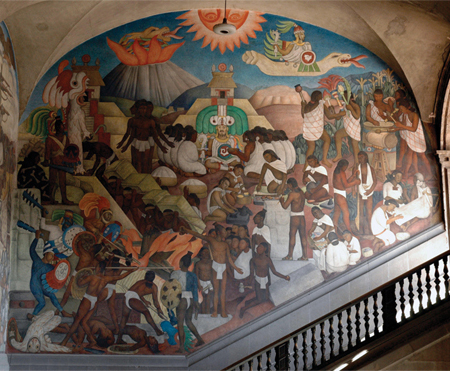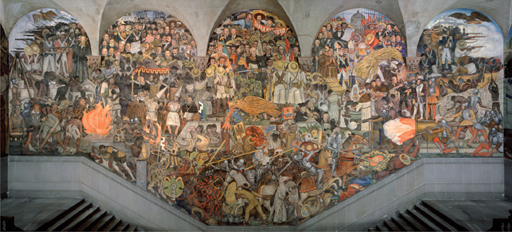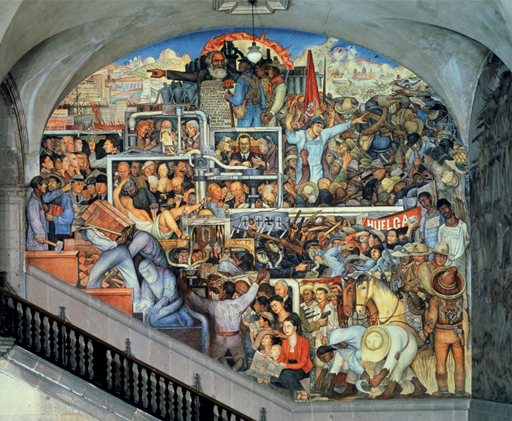2 History of Mexico
Now take a look at Rivera’s famous mural the History of Mexico: From the Conquest to the Future, which is painted on the main stairway inside Mexico City’s National Palace. First in chronological order, to the right of the central stairwell (on the north wall) there is the part of the mural called the The Aztec World (Figure 2), which was painted in 1929. Then, on the main (west) wall, consisting of five vaulted bays, there is the massive fresco From the Conquest to the Present (Figure 3), painted in 1929–30. And finally, to the left of the central stairwell (on the south wall), Rivera painted Mexico Today and Tomorrow (Figure 4) in 1934–35.

The National Palace stands on the east side of the Zócalo (the principal square in Mexico City) and was built upon the spot that had been the centre of Mexican political power going back to Aztec times. After the revolution, the palace housed the president, the cabinet and various government bureaucracies. Rivera painted his mural between 1929 and 1935, during the period when Plutarco Elías Calles was the ‘Strong Man’ in Mexican politics. Like his predecessor Álvaro Obregón, who was the first president after the violence of 1910–20 had abated, Calles had been a leading general in the revolutionary army. Although his presidential term had officially run from 1924−28, he effectively continued his rule for the next six years, during which time there were three short-term ‘puppet presidents’, until the more left-leaning Lázaro Cárdenas was elected in December 1934.

History of Mexico may not be the biggest mural that Rivera produced in Mexico City but it is certainly the most important. According to Stanton Catlin, Rivera’s mural sequence ‘is one of the most compendious visual displays of historical material in near human scale in the history of art’, and it is thereby equal in significance to Michelangelo’s ceiling frescoes in the Sistine Chapel (Catlin, 1986, p. 261). Its dramatisation of the history of the country from Aztec times through to the present (the 1930s), and beyond into an imagined future – prominently featuring the succession of wars fought by the Mexicans to overthrow different colonial oppressors from the conquest of 1521 onwards – is epic in terms of both scale and historical reach.

